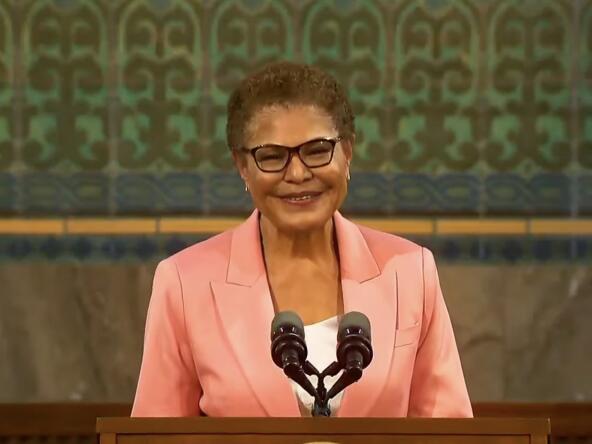Museum Funding In Jeopardy: Examining The Impact Of Trump's Budget Decisions

Table of Contents
Significant Cuts to NEA and NEH Funding
The proposed reductions to the National Endowment for the Arts (NEA) and the National Endowment for the Humanities (NEH) under the Trump administration represent a significant blow to museum funding. These cuts, impacting the very foundations of arts and humanities support in the United States, directly affect countless museums nationwide.
- Specific percentage cuts proposed: While the exact percentages varied year to year, proposed cuts were substantial, often exceeding 40% in some instances, drastically reducing the already limited funds available. This directly translated to less money available for grants supporting museums.
- Historical context of NEA/NEH funding and its impact on museums: The NEA and NEH have historically played a crucial role in supporting museums through grants for exhibitions, educational programs, and preservation efforts. These grants often represent a significant portion of a museum's budget, particularly for smaller institutions. The cuts represent a departure from decades of bipartisan support for the arts and humanities.
- Examples of museums directly impacted by these cuts: The impact spanned the country. For example, smaller historical societies in rural areas of states like Iowa and Kansas faced severe funding shortfalls, forcing them to reduce staff or cancel planned exhibitions. Similarly, many state-funded museums relying on supplemental NEA/NEH grants experienced significant budget constraints.
- The ripple effect – how these cuts affect smaller museums and organizations more severely: Larger museums with robust endowments might weather the storm somewhat, but smaller museums and organizations often lack the resources to absorb such drastic funding reductions. This disproportionate impact threatens the diversity of museum offerings and access to cultural experiences across different communities. Museum budget cuts of this magnitude risk permanently closing smaller institutions.
The Impact on Museum Operations and Programming
Reduced museum funding directly translates to operational difficulties and compromised programming. The consequences are far-reaching and impact every aspect of museum function.
- Staff layoffs and reduced working hours: Budget cuts often lead to staff reductions, impacting curatorial staff, educators, and maintenance personnel. Reduced working hours further strain existing staff and diminish the quality of services offered. Museum job losses are a direct and painful result of inadequate funding.
- Curtailed exhibition programs and educational outreach initiatives: Fewer exhibitions mean less engagement with the public and a diminished capacity for museums to fulfill their educational mission. Educational program cuts limit crucial opportunities for learning and cultural enrichment.
- Deferred maintenance and building repairs: Necessary repairs and maintenance are often postponed due to budget constraints, leading to building deterioration and potential safety hazards. The long-term cost of neglecting maintenance far outweighs the short-term savings.
- Limited accessibility programs for diverse communities: Budget cuts disproportionately affect accessibility programs designed to make museums inclusive for individuals with disabilities and diverse communities. This limits participation and reinforces existing inequalities.
- Impact on research and preservation efforts: Research and preservation of artifacts are often the first casualties of budget cuts, jeopardizing the long-term protection of cultural heritage. Art preservation funding is crucial for the future, and any reduction is detrimental.
Long-Term Effects on Cultural Heritage and Education
The long-term consequences of reduced museum funding extend far beyond the immediate operational challenges. They threaten the very fabric of our cultural landscape and access to education.
- Loss of access to cultural heritage for underserved populations: Reduced funding limits outreach programs, impacting communities with limited access to cultural institutions. This exacerbates existing inequalities and diminishes the public's ability to engage with its shared cultural heritage.
- Negative impacts on arts education and community engagement: Museums play a crucial role in arts education and community engagement. Reduced funding compromises these vital functions, leaving a void in community cultural life. The loss of arts education opportunities is particularly damaging to younger generations.
- The erosion of national cultural identity and preservation of history: Museums are repositories of our national history and cultural identity. Reduced funding threatens the preservation of these irreplaceable artifacts and the stories they tell, eroding our collective memory. Cultural heritage preservation is paramount, requiring sustained investment.
- Economic impact on surrounding communities due to reduced tourism and employment: Museums are significant economic drivers, attracting tourists and supporting local businesses. Reduced funding leads to reduced tourism and employment, negatively affecting the surrounding community. The economic impact of museums is often overlooked, yet it's substantial.
Advocacy and Potential Solutions
Preserving museum funding requires proactive advocacy and innovative solutions. We must act decisively to protect these invaluable institutions.
- Importance of public advocacy and contacting elected officials: Contacting elected officials to voice concerns about museum funding is crucial. Public pressure can influence policy decisions and secure increased funding for cultural institutions.
- Support for private donations and philanthropic initiatives: Encouraging private donations and philanthropic initiatives is essential to supplementing public funds. Private museum funding can provide critical support to ensure the survival of museums.
- Exploring alternative funding models (e.g., crowdfunding, corporate sponsorships): Diversifying funding sources through crowdfunding campaigns and corporate sponsorships can mitigate reliance on government funding. Museum fundraising strategies must evolve to embrace multiple income streams.
- The role of museum associations and advocacy groups: Museum associations and advocacy groups play a vital role in advocating for increased funding and protecting the interests of museums. Their collective voice is crucial in influencing policy decisions.
Conclusion
Trump's budget decisions cast a long shadow over the future of museum funding. The potential consequences, from staff reductions to the erosion of cultural heritage, are profound. However, by understanding the depth of the problem and actively engaging in advocacy and exploring alternative funding streams, we can work together to protect our museums and preserve our invaluable cultural legacy for future generations. Let's act now to secure the future of museum funding and ensure these vital institutions remain vibrant and accessible to all. Addressing this museum funding crisis requires immediate and sustained effort. Let's work together to secure museum funding and prevent further damage to our cultural heritage.

Featured Posts
-
 April 18 2025 Nyt Mini Crossword Puzzle Answers And Helpful Hints
May 23, 2025
April 18 2025 Nyt Mini Crossword Puzzle Answers And Helpful Hints
May 23, 2025 -
 Big Rig Rock Report 3 12 Rock 106 1 Full Recap And Highlights
May 23, 2025
Big Rig Rock Report 3 12 Rock 106 1 Full Recap And Highlights
May 23, 2025 -
 Sam Cook Englands New Test Bowler For Zimbabwe Series
May 23, 2025
Sam Cook Englands New Test Bowler For Zimbabwe Series
May 23, 2025 -
 Le Gouvernement Quebecois Fixe Des Cibles Pour Le Francais Sur Les Plateformes De Diffusion
May 23, 2025
Le Gouvernement Quebecois Fixe Des Cibles Pour Le Francais Sur Les Plateformes De Diffusion
May 23, 2025 -
 Data Breach Exposes Millions In Losses Focus On Executive Office365 Accounts
May 23, 2025
Data Breach Exposes Millions In Losses Focus On Executive Office365 Accounts
May 23, 2025
